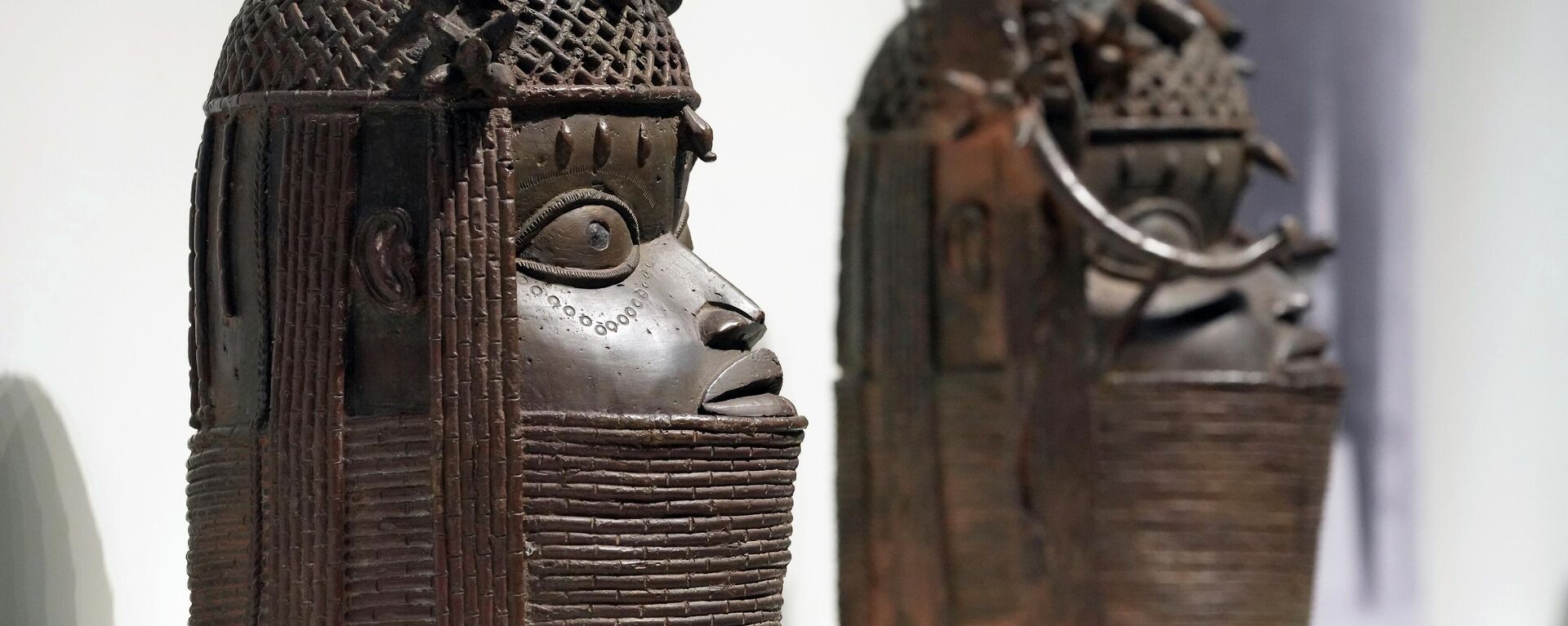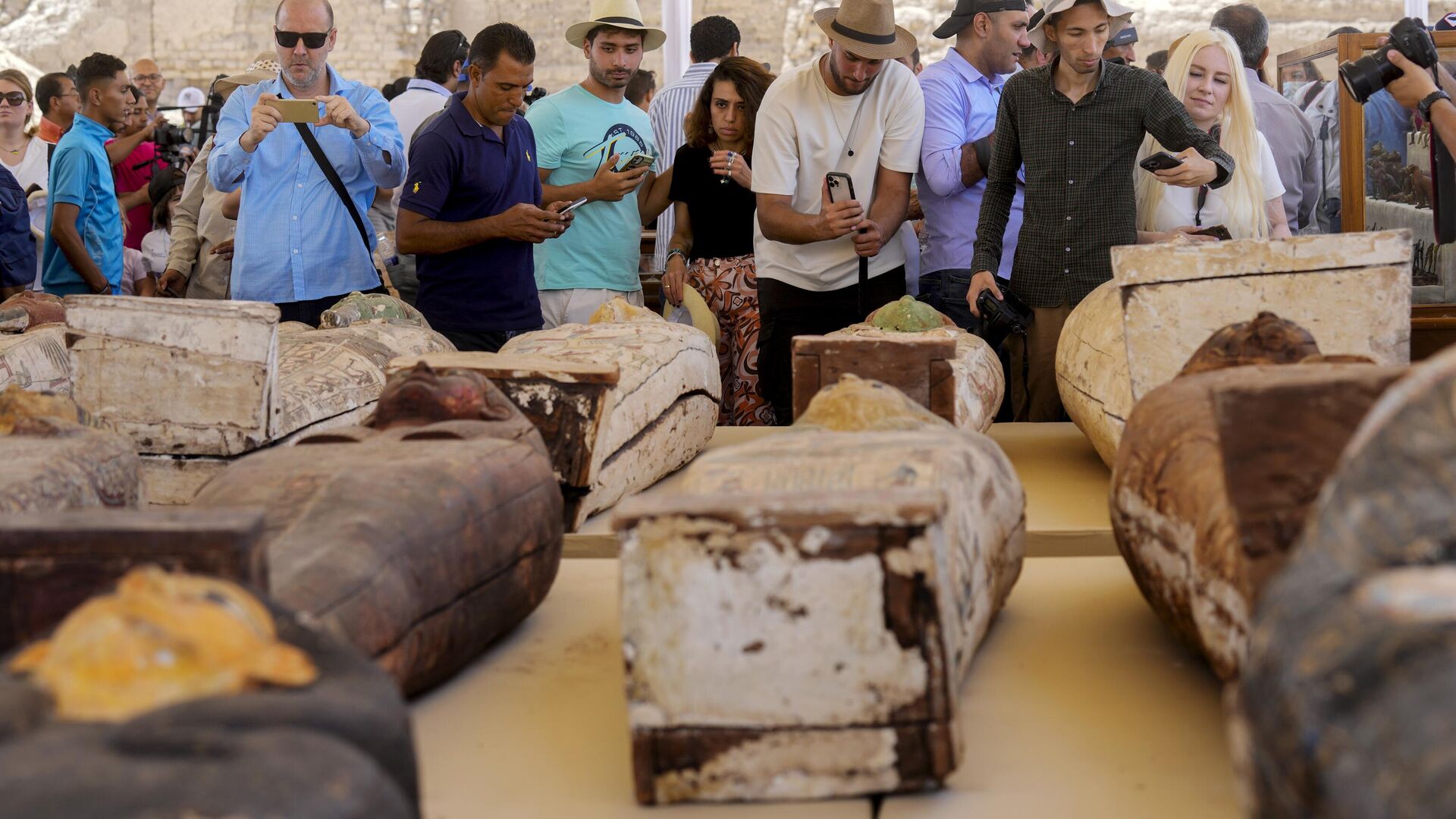https://sputnikglobe.com/20221210/ireland-to-repatriate-ancient-mummy-to-egypt-in-2023-1105303178.html
Ireland to Repatriate Ancient Mummy to Egypt in 2023
Ireland to Repatriate Ancient Mummy to Egypt in 2023
Sputnik International
In this article you will read about Ireland repatriating ancient mummy to Egypt in 2023
2022-12-10T12:11+0000
2022-12-10T12:11+0000
2022-12-10T12:11+0000
africa
north africa
egypt
repatriation
artifacts
stolen artifacts
antiquities
https://cdn1.img.sputnikglobe.com/img/07e6/0c/0a/1105304536_0:160:3073:1888_1920x0_80_0_0_abc666ffa3b7e37a24bc8b7f859a4232.jpg
Ireland’s University College Cork has announced that in 2023 it will repatriate to Egypt antiquities the oldest of which likely date between 945-700 BC.The items to be returned include mummified human remains, a sarcophagus, a set of four Canopic jars, and cartonnage (coverings), that were given to UCC in 1928 as a donation.The mummified remains were thought to belong to a queen because the sarcophagus they were in was discovered in the Valley of the Queens. However, it was later discovered that the remains belonged to a 45-50 year-old male, whose name, according to an inscription on the sarcophagus, was Hor.The sarcophagus paintings portray the procession of the gods to the offering table, where Thoth, the Egyptian god of writing, wisdom, and magic, greets the deceased Hor.The Canopic jar set is also among items used by Egyptians during the mummification process. The jars appear to be one of the collection's oldest items.Egyptian Ambassador to Ireland Mohamed Sarwat Selim expressed gratitude to the college, saying that returning national artifacts has always been a top priority for Egypt.Meanwhile, Egypt is currently working on the return of its other antiquities from the British Museum. In particular, Egyptians are demanding repatriation of the Rosetta Stone, an artifact of great importance that has been used by scientists to decipher Egyptian hieroglyphs. This artifact was brought to London from Paris after the capitulation of Alexandria in 1801, ending the French expedition to Egypt.In an attempt to return this and many other artifacts, Egyptian archaeologists created a "Repatriate Rashid" petition that has already gathered over 2,500 online signatures. According to the petition, the presence of Egyptian artifacts, including the Rosetta Stone, in the British Museum "supports past colonial endeavors of cultural violence" and is "an opportunity for the Britain to demonstrate moral leadership."
https://sputnikglobe.com/20221012/nigeria-calls-on-british-museum-to-repatriate-stolen-19th-century-benin-bronzes-1101748478.html
africa
north africa
egypt
Sputnik International
feedback@sputniknews.com
+74956456601
MIA „Rossiya Segodnya“
2022
News
en_EN
Sputnik International
feedback@sputniknews.com
+74956456601
MIA „Rossiya Segodnya“
Sputnik International
feedback@sputniknews.com
+74956456601
MIA „Rossiya Segodnya“
ireland repatriates mummy to egypt, ireland returns to egypt antiquities, university college cork, a mummy of an egyptian queen, a mummy of hor
ireland repatriates mummy to egypt, ireland returns to egypt antiquities, university college cork, a mummy of an egyptian queen, a mummy of hor
Ireland to Repatriate Ancient Mummy to Egypt in 2023
The only records available show that "African missioners" donated "a mummy of an Egyptian Queen" to Ireland’s University College Cork. This record is thought to refer both to the mummy and its sarcophagus.
Ireland’s University College Cork has announced that in 2023 it will repatriate to Egypt antiquities the oldest of which likely date between 945-700 BC.
The items
to be returned include mummified human remains, a sarcophagus, a set of four Canopic jars, and cartonnage (coverings), that were given to UCC in 1928 as a donation.
The mummified remains were thought to belong to a queen because the sarcophagus they were in was discovered in the Valley of the Queens. However, it was later
discovered that the remains belonged to a 45-50 year-old male, whose name, according to an inscription on the sarcophagus, was Hor.
The sarcophagus paintings portray the procession of the gods to the offering table, where Thoth, the Egyptian god of writing, wisdom, and magic, greets the deceased Hor.
The Canopic jar set is also among items used by Egyptians during the mummification process. The jars appear to be one of the collection's oldest items.
Egyptian Ambassador to Ireland Mohamed Sarwat Selim
expressed gratitude to the college, saying that returning national artifacts has always been a top priority for Egypt.
“I wish to thank all stakeholders for their work, particularly, UCC President Professor John O’Halloran, the National Museum of Ireland and the Egyptian officials at the Ministry of Tourism and Antiquities for their continuous efforts to ensure the completion of this endeavor successfully in 2023,” he pointed out.
Meanwhile, Egypt is currently
working on the return of its other antiquities from the British Museum. In particular, Egyptians are demanding repatriation of the Rosetta Stone, an artifact of great importance that has been used by scientists to decipher Egyptian hieroglyphs. This artifact was brought to London from Paris after the capitulation of Alexandria in 1801, ending the French expedition to Egypt.

12 October 2022, 13:50 GMT
In an attempt to return this and many other artifacts, Egyptian archaeologists created a "
Repatriate Rashid" petition that has already gathered over 2,500 online signatures. According to the petition, the presence of Egyptian artifacts, including the Rosetta Stone, in the British Museum "supports past colonial endeavors of cultural violence" and is "an opportunity for the Britain to demonstrate moral leadership."



